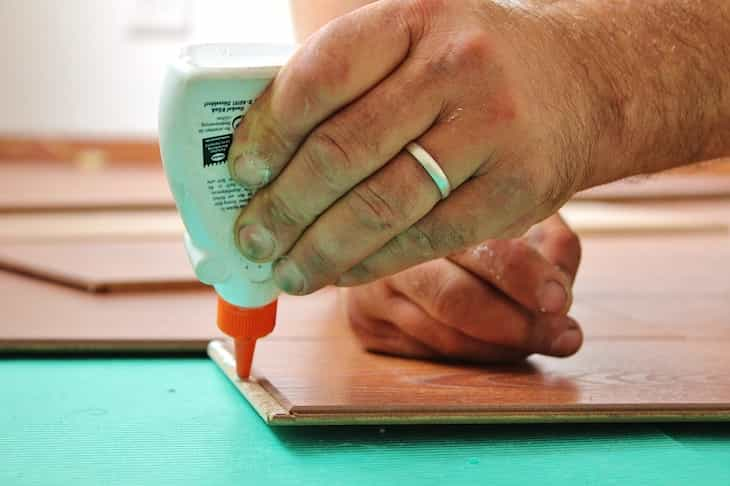While some types of laminate can be waterproof, most of them aren't – so they can swell.
When it happens, you can sometimes save the day and reverse the damage, but some parts of your floor might still need replacements.
Here is what you should do if you notice laminate swelling.
Identify the cause
Swelling in laminate can occur due to moisture exposure.
It's important to determine the source of the moisture, such as a leak or spill, and address it to prevent further damage.

Dry the area
Start by drying the affected area. Use a clean cloth or towel to absorb any excess moisture.
You can also use a fan or open windows to improve air circulation and aid in drying.
Remove standing water
If there is standing water on the laminate, use a mop or sponge to carefully remove it.
Avoid rubbing or applying excessive pressure, as it may cause further damage.
Allow time for drying
Give the laminate enough time to dry completely.
This may take several days, depending on the extent of the swelling and the humidity levels in the room.
Address severe damage
If the swelling has caused severe damage to the laminate, such as warping or buckling, you may need to consider replacing the affected pieces.
Consult a professional or follow manufacturer guidelines for proper replacement procedures.
Prevent future damage
To prevent future swelling, take precautions to avoid excessive moisture exposure.
Clean up spills promptly, use mats or rugs in areas prone to water splashes, and ensure proper ventilation in rooms with high humidity levels.
Previously, we talked about clothes sticking when ironing.









